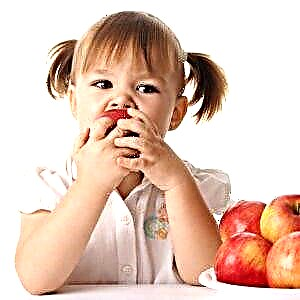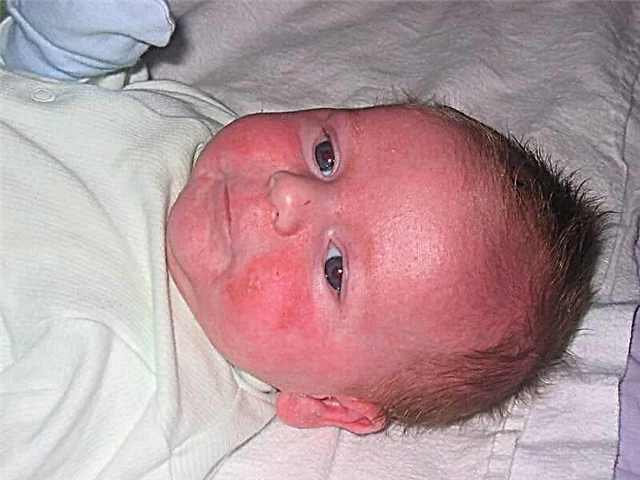Allergic diseases in babies increasingly require parents to change their usual living conditions. This applies to everyday life and diet, revision of the usual menu.
The principles of building proper nutrition in children with allergic diseases
Diet for allergies requires a responsible parenting approach. It is necessary to strictly follow the recommendations of the allergist-immunologist on the selection of products, the peculiarities of their preparation.
Despite many restrictions, food for allergies should be selected as much as possible in terms of the energy value of nutrients (nutrients).
Understanding the allergenic potential of foods
Many years of research and data from extensive clinical studies allow us to divide all products into 3 categories according to the degree of allergenicity.
Foods with a high allergenic potential:
- cow's milk;
- chicken eggs;
- chicken meat;
- gluten;
- tomatoes;
- celery;
- coffee;
- chocolate;
- nuts;
- honey;
- Strawberry;
- citrus;
- mushrooms.
These foods should be excluded from the diet of an allergic child.
Medium allergenic activity is possessed by:
- beef;
- oats, rice;
- potatoes;
- peaches;
- currant;
- rosehip.
- legumes.
Excluded from the child's diet during an exacerbation of an allergic disease.
Products with low allergenic activity:
- dairy products;
- corn;
- greens;
- horsemeat;
- rabbit meat;
- cauliflower;
- broccoli;
- apples, currants, yellow cherries, pears.
- turkey, lean pork.
The diet of a child suffering from polyvalent allergies most often consists of the above foods.
One-day menu for children with polyvalent allergies
 breakfast. Buckwheat porridge 150 g, butter 5 g, Dutch cheese 15 g, tea 150 ml;
breakfast. Buckwheat porridge 150 g, butter 5 g, Dutch cheese 15 g, tea 150 ml;- dinner. Potato soup with sour cream 150 g, turkey puree 50 g, boiled rice 120 g, dried fruit compote 150 ml;
- afternoon tea. Fruit 100 g, kefir 150 ml;
- dinner. Steamed meat cutlets 50 g, mashed potatoes 100 g, tea 150 ml;
- before going to bed 150 ml of fermented milk product;
- bread per day 100 g.
Nutrition of the child with food sensitization to cow's milk proteins
Allergic children under one year old are assigned an individual dairy-free diet. Children who eat the mixture are prescribed medicinal highly hydrolyzed mixtures, nutrition based on soy protein isolates. For nursing women, special hypoallergenic diets have been developed with the elimination of dairy products, with the addition of vitamins and mineral complexes (Materna, Complivit).
The duration of such a diet is from three months to six months or until remission is achieved. There are also therapeutic and prophylactic mixtures that are prescribed to children at risk of developing an allergic reaction to cow's milk - "Humana GA", "Nutrilon GA", "NAS GA" ".
The industry produces a number of probiotic products containing bifidobacteria and lactobacilli in their composition. When such products are consumed, high local immunity is formed in the intestine.
Fermented milk formulas used for allergies:
- Agusha-1 and 2;
- NAN fermented milk.
Non-adapted specialized fermented milk products:
- kefir;
- bifidokefir;
- Biolact;
- biokefir.
Unadapted fermented milk products are used no earlier than the child reaches 8 months.
Special starter cultures with bifidobacteria contain Narine and Acidolact.
Below is a sample menu if you need to follow a dairy-free diet for a child over 6 months old.
- Feeding # 1: 180 ml of breast milk or formula.
- Feeding number 2: dairy-free buckwheat porridge 170 g + butter + applesauce 40 g
- Feeding number 3: squash-potato puree 160 g, pork puree 50 g, pear fruit puree 20 g
- Feeding number 4: vegetable and cereal dish 160 ml, turkey meat puree 30 g, peach fruit puree 40 g, vegetable oil 1/2 tsp.
- Feeding number 5: breast milk or formula 180 ml.
Such a menu for food allergies can achieve clinical remission in most children.
Nannie's goat milk-based formula in the diet of children with food hypersensitivity
- the composition contains essential amino and omega acids, prebiotics, no sweeteners;
- pleasant taste and good creamy smell;
- are made from whole goat milk;
- do not contain casein;
- Made in New Zealand, Eco-Friendly, Clinically Tested.
Diet for food sensitization to fish
Allergens contained in fish are very strong and can cause a pronounced immune reaction in a child, up to anaphylactic shock.
 When this type of hypersensitivity is detected in children from the diet excluded:
When this type of hypersensitivity is detected in children from the diet excluded:
- river and especially sea fish;
- crabs;
- shrimp;
- scallops;
- mussels;
- canned fish and seafood.
Allergy to chicken eggs
It occurs in almost a third of children with allergic manifestations in the first year of life. A chicken egg contains an ovomucoid. This substance can maintain its activity in the intestine for a very long time. Has the ability to suppress enzymes involved in digestion.
Diet therapy for chicken egg allergy excludes:
- chicken's meat;
- chicken eggs in any form of preparation;
- chicken bouillon;
- quail eggs and meat;
- mayonnaise;
- duck meat.
Wheat food allergy diet
 From the baby's nutrition follows exclude the following products:
From the baby's nutrition follows exclude the following products:
- wheat flour baked goods;
- wheat bread;
- kvass;
- breadcrumbs;
- pasta;
- pancakes, dumplings;
- biscuit;
- sausages, sausages, canned food;
- soy sauce.
For hypersensitivity to legumes and soy
Avoid foods:
- tofu, soy cheese;
- soy margarine;
- vegetable starch;
- pasta with the addition of soy flour;
- dyes with soy;
- lecithin.
Peanut allergy
It is the strongest allergen causing a large number of anaphylactoid reactions in children. It is not yet accepted in Russia to produce special products for allergy sufferers, as is customary in Europe and America.
If you are allergic to peanut protein exclude from the diet:
- peanut butter, nut mixes, groundnuts;
- peanut biscuits and baked goods;
- Chinese food containing peanuts;
- nougat;
- chocolate.
Nutritional advice for nursing mothers and pregnant women at risk of developing food allergies in their baby
- The physiological need for energy must be met.
- Highly allergenic foods are excluded from the earliest gestational age (pregnancy) and throughout the entire feeding period.
- It is better to replace whole milk with fermented milk products.
- Beware of spicy and spicy foods, foods containing preservatives and dyes.
- Heat treatment of food should be gentle.
- Foods with a high carbohydrate content are undesirable for consumption.
- Special balanced mixtures for additional nutrition for women carrying a baby: Femilak, Enfamama, Annamaria, Madonna, Amalthea.
The mixtures help to restore the content of vitamin and mineral complexes in a woman's body.
Diet therapy for food allergies in children with atopic dermatitis
A hypoallergenic diet is prescribed for 1-3 weeks with further adjustment. A strict hypoallergenic diet for allergies in children includes dishes prepared at home from natural products of the same type: meat, cereals, vegetables, fruits.

Further, gradually begin to introduce products of medium degree of allergenic activity. With the development of severe reactions, the product is completely excluded from the child's diet throughout life.
Elimination diets for children sensitized to pollen
Pollen has a similar antigenic composition with some fruits and vegetables, the use of which, in the presence of hypersensitivity, causes the development of severe allergic reactions.
- when sensitizing to tree pollen, apples, stone fruits, carrots, celery, fresh juices, smoothies, and kiwi are removed from the child's diet. In some cases, cross-reactions to cucumbers and tomatoes are possible;
- if your baby is hypersensitive to grass pollen, you should avoid eating cereals, sorrel, kvass;
- wormwood and other weeds have a similar antigenic composition to beets, citrus fruits, sunflower seeds, honey, chicory, melon and watermelon.
Diet therapy in patients with chronic urticaria
In the acute period, you should use a hypoallergenic diet according to Ado. All products that can cause the release of histamine are excluded - chocolate, soda, coffee, seafood.
Starting from the fourth week after an exacerbation, you can gradually expand the diet under the supervision of an allergist-immunologist. Foods that cause an allergic reaction are excluded from the diet of a child with allergies throughout life.
The main features of diet therapy for food hypersensitivity in young children
- Longest breastfeeding.
- A nursing mother should follow the diet prescribed by a doctor.
- Complementary foods are introduced as prescribed by a doctor, not earlier than six months of life.
- Highly allergenic foods are introduced at 1 to 2 years of age with utmost care.
- The use of highly hydrolyzed therapeutic mixtures for hypersensitivity to cow's milk proteins.

 breakfast. Buckwheat porridge 150 g, butter 5 g, Dutch cheese 15 g, tea 150 ml;
breakfast. Buckwheat porridge 150 g, butter 5 g, Dutch cheese 15 g, tea 150 ml;

